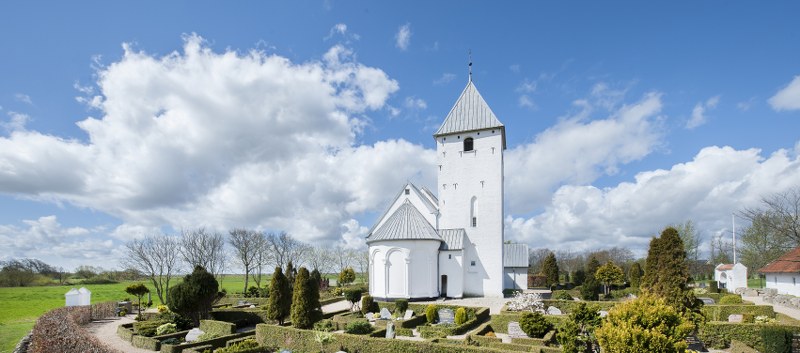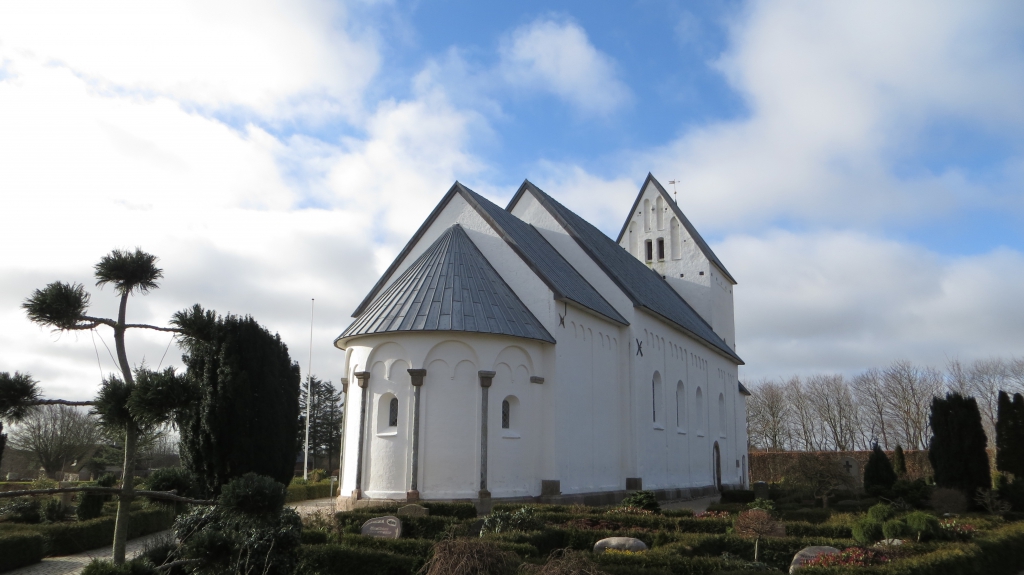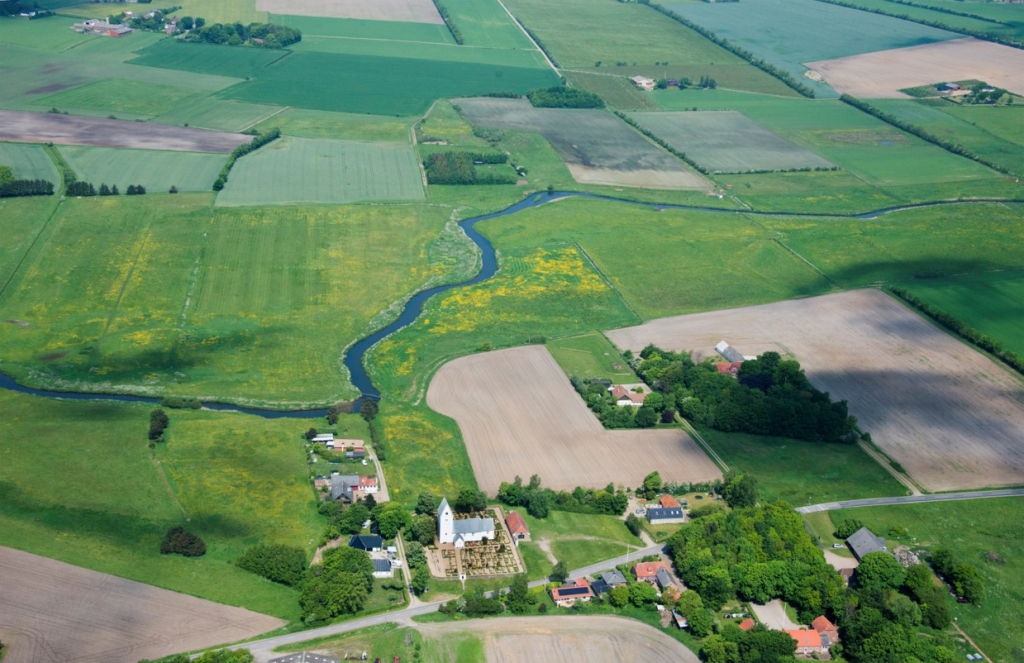The tufa churches in West Jutland

Vilslev Church is made of tufa with a granite foundation. Photo: Esbjerg Town Historical Archives, Torben Meyer.
Tufa from the Rhine area
The first Danish churches were built of wood, but in 1100-1200s, stone churches began to gain in popularity. West Jutland does not have many natural deposits of stone, and therefore the building materials had to be imported. It was natural to use the sea route to transport the heavy materials and in South West Jutland tufa was imported via Germany and Holland.
Tufa is light, porous and easy to work with. It consists of hardened volcanic ash and volcanic dust, and tufa is found in large quantities in places like Italy and around the Elbe and the Rhine rivers.
The tufa was sailed up along the Wadden Sea coast, the river Kongeå and other major watercourses. A total of 55 churches in Denmark were totally or partially built of tufa, the vast majority being in South West Jutland. The construction of a village church required 10-15 shiploads of tufa. Medieval merchant ships could carry between 15 and 20 tons.

Jernved Church. Photo: Charlotte Lindhardt.
From the Rhine to the river Kongeå
The tufa was dug out of large quarries and shipped by sea to the nearest port or quay. Here the stones were loaded onto carriages which drove to the building site.
It is not known how the transportation was agreed, but the number of Danish tufa churches suggests some kind of organised trading. Two of the disembarkation places were the Dutch cities Deventer by the river IJssel and Utrecht by Lek.
Medieval large cargo ships were cogs and in Hviding Church, which is located south west of Ribe and is built of tufa, there is a fresco depicting a cog.
Along the Wadden Sea coast and the rivers were a number of small natural harbours and loading sites. Hviding Nakke lay just outside Ribe and was suitable for the larger ships that could not sail through the Ribe Å. Additionally, the remains of a ship from the 600s has been found in the river Kongeå, by Gredstedbro. The ship was a rowing vessel, but was intended for goods and it shows that sailing up the Kongeå - and other rivers - has taken place for many centuries.

The base of Hjortlund Church base made of tufa, bricks and granite, while the chancel and the nave consist of tufa with individual parts in brick. Vilslev Church is made of tufa with a granite foundation. Photo: Esbjerg Town Historical Archives, Torben Meyer.
The tufa churches in South West Jutland
The age of a church can be determined very precisely. Roof constructions usually originate from the time when the church was built, and using dendrochronology, it has been discovered that all the Danish tufa churches date from about 1175-1250. Of the 55 Danish tufa churches, there are still 50 in existence. In the Netherlands and Germany, tufa was also used for other buildings, but in Denmark only one other tufa building is known, namely Ribebispens farm in Lustrup, south of Ribe.
The largest Danish tufa church is Ribe Cathedral. Along the river Kongeå are Vilslev, Jernved, Kalvslund, Hjortlund and Føvling churches, but if you go further up the Wadden Sea coast, and along the rivers Ribe Å, Sneum Å and Varde Å, you can find more tufa churches, including Hviding, Sneum, Tjæreborg, Billum, Hostrup and Janderup. Along the Wadden Sea area of South Jutland, you will find Brøns, Ballum, Emmerlev and Højer churches, which are all fully or partially made of tufa. In addition to the 55 Danish tufa churches, there are also 25 tufa churches in Schleswig - the old Danish country.

Kalvslund Church. Photo: Esbjerg Town Historical Archives, Torben Meyer.
Author: Charlotte Lindhardt

Hjortlund Church by the river Kongeå. Photo: Esbjerg Town Historical Archives, Torben Meyer.

